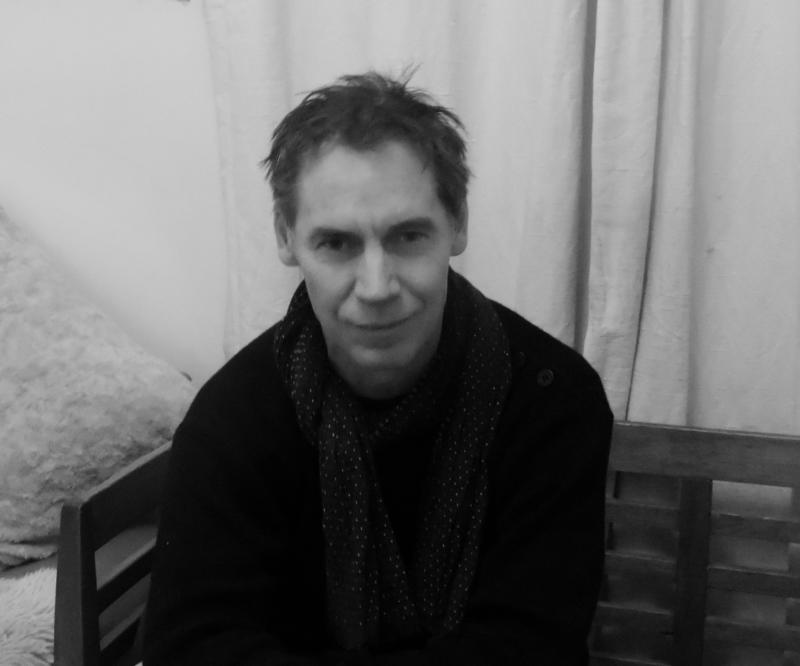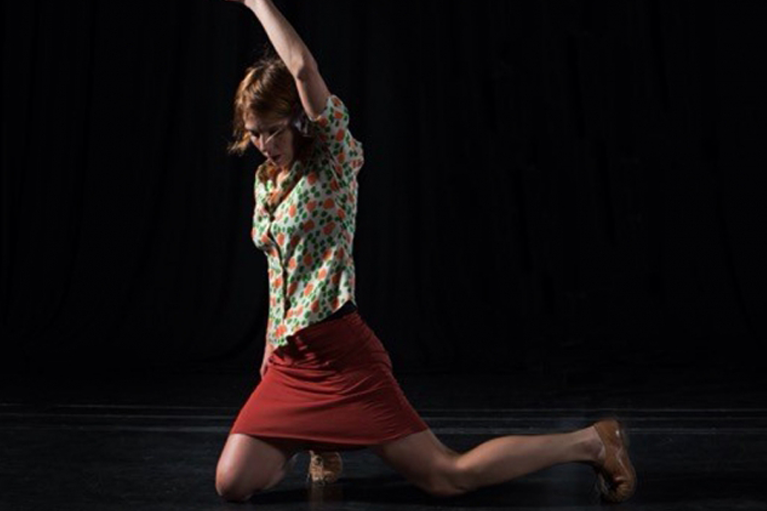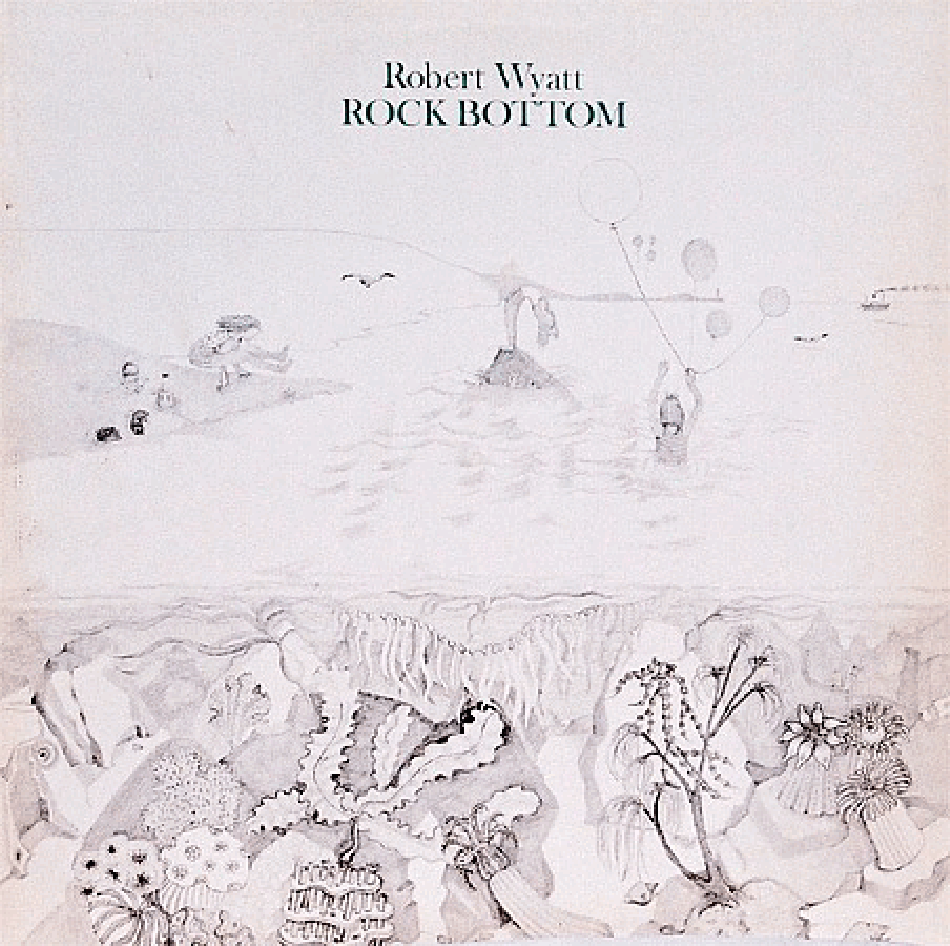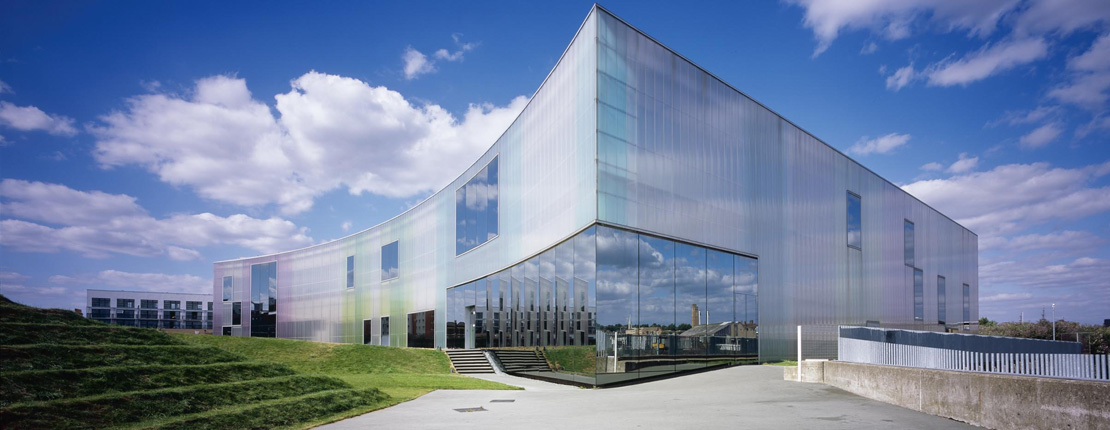10 Questions for Choreographer Charles Linehan | reviews, news & interviews
10 Questions for Choreographer Charles Linehan
10 Questions for Choreographer Charles Linehan
Prior to Brighton Fest premiere, Charles Linehan talks Berlin, time machines, Robert Wyatt and more

Charles Linehan is an acclaimed British choreographer, whose company has performed all over the world, from DanSpace New York to Brussels’ Kaai Theatre to the Venice Biennale. Born in Cyprus and raised in Kent, he studied at the Rambert School of Ballet and Contemporary Dance, prior to honing his craft as a dancer with various European companies.
The Charles Linehan Dance Company appeared in 1994 and he became choreographer-in-residence at both The Place and the South Bank Centre, also winning the 1998 Jerwood Choreography Award. He moved to Berlin in 2011 for two years but returned to the UK to be appointed Reader in Choreography at Trinity Laban Conservatoire of Music and Dance. He is an Associate Artist with Dance4, Nottingham. The world premieres of two new pieces, My Mother’s Tears and Quarter Plus Green, take place at this year’s Brighton Festival, which co-commissioned both.
THOMAS H GREEN: Starting with the obvious thing to ask, can you tell us a bit about My Mother's Tears?
CHARLES LINEHAN: I was curious about what would happen if you took the codified language of 19th century ballet mime gestures – with all their representations of love, death, weapons, and, er, stags – and placed it in a different context. So leafing through the text and images of a dusty old hardback book that’s supposed to explain how and why you do these things, I planned the outline of the piece. I worked with ex-Royal Ballet soloists William Trevitt and Michael Nunn. I liked the fact that they are older, haven’t performed for a long time, and that they were playful in the process. Like aural history in many cultures the intricacies of ballet mime are passed down through the generations.
 How about A Quarter Plus Green?
How about A Quarter Plus Green?
Within the context of the programme A Quarter Plus Green is a wolf in sheep's clothing. It’s a choreographic jigsaw that is propelled and constrained by the independent transformations of the lighting environment and an escalating wall of sound by Richard Skelton. As well as stripping the venue back to a wooden floor, the performance area will be cleared to a full 20 metres in depth and there will be an emphasis on the lighting hardware.
Talking of which, how has technology been an inspiration and accomplice in your career?
It’s a luxury to have portable hi-resolution cameras as well as a video suite and sound-editing studio on a laptop. I am not a digital native and I remember the massive video rendering machines that used to take up the best part of a room.
 What was the last album you listened to, end-to-end?
What was the last album you listened to, end-to-end?
It must have been Robert Wyatt’s Rock Bottom. I can’t tell you when I played it but it was an album that my girlfriend in Kent also knew back when we were 17 or 18. A while after we split up she came to my house to collect her Joy Division albums that I was trying to hang on to. It was many years later that we met again and quite a few more before we married and had children together.
Your Scalectrix project along with the production Falling Light come at the dawn of your choreographic career, when you were pushing out on your own. What was it and how did it affect your life?
It was a gruellingly physical duet. At that time, in 1994, I had hardly any connection with the London/UK dance scene as I had just returned to London having spent most of my career as a performer around Central Europe. Luckily there are some programmers who are committed to seeing grass roots work, in this case John Ashford and Betsy Gregory. It did mean that we leap-frogged into some festivals and later on I became Choreographer-in-Residence at The Place in London.
If you had a time machine and you could go back in time anywhere for 24 hours, where would you go?
That’s tantalising and difficult to narrow down. I’ve seen photos my Mum took while she was cycling through the Middle East in the 1950s so Lebanon or Iraq at that time would be fascinating. Having said that, California in the 1970s sounds attractive with its optimistic free-wheelin' culture of excess-Americana.
I read that your earliest involvement with dance was folk dancing in Cyprus. How and where were was this?
Yes, I think I’ve got a photo of me as a kid being taught folk dancing on a beach in Limassol. I was born in Cyprus but when I was 11 I was evacuated after the coup d'état and the subsequent Turkish invasion [in 1974]. Although my parents are English, England was an exotic place for me to come to. In regard to folk dance I just like the directness and joy of it, much like how I love rembetica music.
 One interview states that you were "thrown out" of the Rambert Ballet School. Is this true?
One interview states that you were "thrown out" of the Rambert Ballet School. Is this true?
I don’t remember anything that specifically warranted me being kicked out but I’m sure I deserved it. It was a good thing. I had done my time there and just by chance I got my first job the next day. At that time it was old school and you just had to put up with stuff, become resilient, so in one way it was all in good stead. Students get a much better education nowadays.
What did your years living in Berlin mean to you?
I have always loved Berlin, having performed there in the past, and I have vivid memories of visiting Communist East Berlin when I was 24. Over the two years we lived there I spent most of my time looking after the children, doing the school bike run, mainly a domestic existence. We knew we weren't going to be there permanently so professionally I wasn’t willing to start my career again from scratch by gathering people to work with, without paying them or myself, asking for favours. It became unsustainable, though it was culturally inspiring – and that included the home matches of the “other” football team, Union Berlin.
Tell us about what projects you have on and what you are looking forward to in 2016.
In June I am collaborating with artist Wolfgang Weileder in a project that sees a full-scale replica of a section of the façade of the Trinity Laban building (pictured above), designed by Swiss architects Herzog & de Meuron and built in 1997, being constructed out of breeze blocks right in the middle of Canary Wharf. Sections of the 12-metre high 1:1 replica of the façade will be simultaneously constructed and deconstructed over a period two weeks with choreographic interventions. It will be documented in time-lapse and long exposure film.
Explore topics
Share this article
The future of Arts Journalism
You can stop theartsdesk.com closing!
We urgently need financing to survive. Our fundraising drive has thus far raised £49,000 but we need to reach £100,000 or we will be forced to close. Please contribute here: https://gofund.me/c3f6033d
And if you can forward this information to anyone who might assist, we’d be grateful.

Subscribe to theartsdesk.com
Thank you for continuing to read our work on theartsdesk.com. For unlimited access to every article in its entirety, including our archive of more than 15,000 pieces, we're asking for £5 per month or £40 per year. We feel it's a very good deal, and hope you do too.
To take a subscription now simply click here.
And if you're looking for that extra gift for a friend or family member, why not treat them to a theartsdesk.com gift subscription?
more Dance
 'We are bowled over!' Thank you for your messages of love and support
Much-appreciated words of commendation from readers and the cultural community
'We are bowled over!' Thank you for your messages of love and support
Much-appreciated words of commendation from readers and the cultural community
 R:Evolution, English National Ballet, Sadler's Wells review - a vibrant survey of ballet in four acts
ENB set the bar high with this mixed bill, but they meet its challenges thrillingly
R:Evolution, English National Ballet, Sadler's Wells review - a vibrant survey of ballet in four acts
ENB set the bar high with this mixed bill, but they meet its challenges thrillingly
 Like Water for Chocolate, Royal Ballet review - splendid dancing and sets, but there's too much plot
Christopher Wheeldon's version looks great but is too muddling to connect with fully
Like Water for Chocolate, Royal Ballet review - splendid dancing and sets, but there's too much plot
Christopher Wheeldon's version looks great but is too muddling to connect with fully
 iD-Reloaded, Cirque Éloize, Marlowe Theatre, Canterbury review - attitude, energy and invention
A riotous blend of urban dance music, hip hop and contemporary circus
iD-Reloaded, Cirque Éloize, Marlowe Theatre, Canterbury review - attitude, energy and invention
A riotous blend of urban dance music, hip hop and contemporary circus
 How to be a Dancer in 72,000 Easy Lessons, Teaċ Daṁsa review - a riveting account of a life in dance
Michael Keegan-Dolan's unique hybrid of physical theatre and comic monologue
How to be a Dancer in 72,000 Easy Lessons, Teaċ Daṁsa review - a riveting account of a life in dance
Michael Keegan-Dolan's unique hybrid of physical theatre and comic monologue
 A Single Man, Linbury Theatre review - an anatomy of melancholy, with breaks in the clouds
Ed Watson and Jonathan Goddard are extraordinary in Jonathan Watkins' dance theatre adaptation of Isherwood's novel
A Single Man, Linbury Theatre review - an anatomy of melancholy, with breaks in the clouds
Ed Watson and Jonathan Goddard are extraordinary in Jonathan Watkins' dance theatre adaptation of Isherwood's novel
 Peaky Blinders: The Redemption of Thomas Shelby, Rambert, Sadler's Wells review - exciting dancing, if you can see it
Six TV series reduced to 100 minutes' dance time doesn't quite compute
Peaky Blinders: The Redemption of Thomas Shelby, Rambert, Sadler's Wells review - exciting dancing, if you can see it
Six TV series reduced to 100 minutes' dance time doesn't quite compute
 Giselle, National Ballet of Japan review - return of a classic, refreshed and impeccably danced
First visit by Miyako Yoshida's company leaves you wanting more
Giselle, National Ballet of Japan review - return of a classic, refreshed and impeccably danced
First visit by Miyako Yoshida's company leaves you wanting more
 Quadrophenia, Sadler's Wells review - missed opportunity to give new stage life to a Who classic
The brilliant cast need a tighter score and a stronger narrative
Quadrophenia, Sadler's Wells review - missed opportunity to give new stage life to a Who classic
The brilliant cast need a tighter score and a stronger narrative
 The Midnight Bell, Sadler's Wells review - a first reprise for one of Matthew Bourne's most compelling shows to date
The after-hours lives of the sad and lonely are drawn with compassion, originality and skill
The Midnight Bell, Sadler's Wells review - a first reprise for one of Matthew Bourne's most compelling shows to date
The after-hours lives of the sad and lonely are drawn with compassion, originality and skill
 Ballet to Broadway: Wheeldon Works, Royal Ballet review - the impressive range and reach of Christopher Wheeldon's craft
The title says it: as dancemaker, as creative magnet, the man clearly works his socks off
Ballet to Broadway: Wheeldon Works, Royal Ballet review - the impressive range and reach of Christopher Wheeldon's craft
The title says it: as dancemaker, as creative magnet, the man clearly works his socks off
 The Forsythe Programme, English National Ballet review - brains, beauty and bravura
Once again the veteran choreographer and maverick William Forsythe raises ENB's game
The Forsythe Programme, English National Ballet review - brains, beauty and bravura
Once again the veteran choreographer and maverick William Forsythe raises ENB's game

Add comment